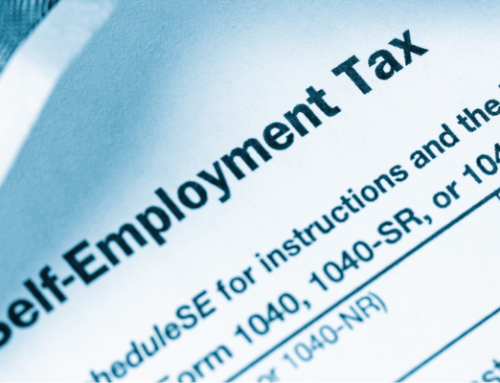What drives people to donate to a not-for-profit? For most people, charitable giving evokes a psychological need to improve the world around them. While there is usually more than one motivation at play, the opportunity to save on taxes is a nice benefit when one wants to give back to their community anyway.
An effective and perhaps overlooked method to do that is through the Neighborhood Assistance Program (NAP) tax credit program.
NAP tax credits give Virginia taxpayers more direct control over how state tax dollars allocated. Because tax credits lower an overall tax bill dollar for dollar, they’re usually considered more valuable than tax deductions. Especially for taxpayers who lost out when the $10,000 state and local tax cap went into effect, utilizing NAP tax credits through an approved donation is an effective way to strategically approach tax planning – while also having a measurable impact on the community.
Background
What is the Neighborhood Assistance Program (NAP)?
Most states have their own version of the Neighborhood Assistance Program. Virginia’s program was established in 1981 to encourage businesses and individuals to make donations to approved 501(c)(3) organizations that served primarily low-income and disadvantaged people.
Today, Virginia’s NAP program doles out $17 million in tax credits. $8 million goes to the Department of Social Services (VDSS) and $9 million to the Department of Education (DOE).
How does the Neighborhood Assistance Program work?
Eligible 501(c)(3) non-profit organizations receive a certain amount of tax credits from the VDSS or DOE based on demonstrated operational success and the organization’s capacity to serve a low-income person or an eligible student with a disability.
NAP tax credits are limited and offered to donors on a first-come, first-serve basis. Taxpayers are encouraged to check with the qualifying organization first and indicate their interest in the NAP tax credit when donating.
How many organizations qualify?
For the most recent tax year, there were almost 325 NAP-approved organizations in Virginia.
Who qualifies for a Neighborhood Assistance Program tax credit?
Individuals and businesses are the two more common recipients of NAP tax credits. Other eligible entities include trusts and fiduciaries and certain service providers. These providers donate services to the organization, such as through a health care clinic or pharmacist, court-referred mediation to patients who are referred to a NAP organization, or other federally qualified health centers, like healthcare providers, pharmacists, mediators, and physician specialists.
All donations, whether cash, service, or otherwise, must be made to a qualifying NAP organization.
Individuals
What are the tax credit requirements for an individual donation?
Individuals can donate cash or marketable securities directly to a NAP organization. Donations must be at least $500. In exchange, the individual taxpayer would then receive a tax credit worth up to 65 percent of the donation’s value.
As an example, a $500 cash donation would really only ‘cost’ the taxpayer $325 after the 65 percent tax credit is factored in.
Is there a maximum donation value limit for receiving tax credits?
Yes. For individuals, the maximum amount is $125,000 per year, which equals a tax credit worth $81,250. Even combined donations to two different NAP organizations must be within the $125,000 limit.
Businesses and trusts currently don’t have a maximum donation limit.
How do I report NAP tax credits on my Virginia Income Tax Return?
Individual taxpayers report the NAP tax credits on Schedule CR, which is filed with the Virginia Department of Taxation. Pass-through entities need to submit Form PTE, Virginia Pass-Through Credit Allocation, with a copy of the tax credit certificate.
What if my tax credit is more than my tax liability?
This happens, though NAP tax credits are non-refundable. Any excess tax credit can be carried forward up to five years.
How does the NAP donation impact tax liability?
Here are three examples based on donations of $1,000, $2,500, and $10,000.
| Donation Amount | $1,000 | $2,500 | $10,000 |
| Federal Taxes at 35% | $350 | $875 | $3,500 |
| Virginia tax credit at 65% | $650 | $1,625 | $6,500 |
| Less reduction for federal itemized deductions for VA tax credit | ($247.62) | ($619) | $2,476.25) |
| Total Tax Savings | $809.88 | $2,024.75 | $8,098.75 |
| Net cost of contribution | $190.12 | $475.25 | $1,091.25 |
Additionally, individuals and businesses may elect to take a lesser tax credit percentage. To do so, they must complete and return a form to the Department of Social Services.
Businesses
What are the tax credit requirements for a business donation?
The minimum donation for businesses and trusts is $616 for a NAP tax credit worth up to 65 percent of the donation’s value. For example, a $1,000 donation would produce a $650 tax credit.
Organizations are permitted to set their own minimum donation amounts for NAP tax credits.
What types of donations can a business make to receive a tax credit?
- Cash, including payroll deductions
- Merchandise
- Rent/Lease
- Professional Services
- Physician Services
- Stock
- Real Estate
- Contracting Services
- Health Care Services
- Mediation Services
Online donations via a third-party processor are permitted; however, the organization needs to be ready to provide additional documentation. Business donations, like real estate, require additional documentation.
Discounted property, partial donations, bargain sales, and donations through a deferred charitable contribution plan are disallowed contributions.
Organizations
What are an organization’s eligibility requirements?
According to Sec. 58-1-439-20 of the Virginia Code, an exempt organization under 501(c)(3) or (4) must:
- Provide “neighborhood assistance” for low-income persons for at least 12 months, and
- At least 75 percent of total revenue is expended to support ongoing programs
- At least 50 percent of people served are low-income
- At least 50 percent of revenue is used to provide services to low-income persons
- Audit, review, or compilation must not contain any significant findings or areas of concern for the organization’s ongoing operations
What is the application process?
Applications open March 15 for the program period that will begin July 1. A Measurable Outcomes report will be required at the end of each fiscal year.
A complete online NAP application, including the additional attachments, must be received by the first business day of May, except for the audit, review, or compilation. The organization can submit the audit, review, or compilation within the 30-day period immediately following the application deadline.
What documents are required for the application?
The organization must supply:
- Profile
- Description and Mission Statement
- Program Goals and Objectives
- Localities Served
Additional application attachments include:
- A copy of the organization’s 501(c)(3) or (4) status documentation
- A copy of the most recent year-ended audit, review, or compilation prepared by an independent CPA
- An audit or review is required if revenues exceed $100,000
- A compilation is required if revenues are $100,000 or less
- A copy of the most recent year-ended federal Form 990
- A copy of the annual renewal Virginia Registration Statement for a Charitable Organization filed with the Department of Agriculture and Consumer Services
For some organizations, gathering this information and completing the required audit, review, or compilation can be time-consuming. Just like organizations only have so many NAP credits to distribute, so too does Virginia. Organizations are encouraged to submit their application as soon as possible.
Individuals seeking to claim NAP tax credits should reach out to the intended organization and their tax advisor to discuss the availability and potential tax impact of the credit.
For questions on Virginia’s Neighborhood Assistance Program tax credit, contact Edward Yoder, CPA, MSA, Partner in PBMares’ Not-for-Profit practice.





